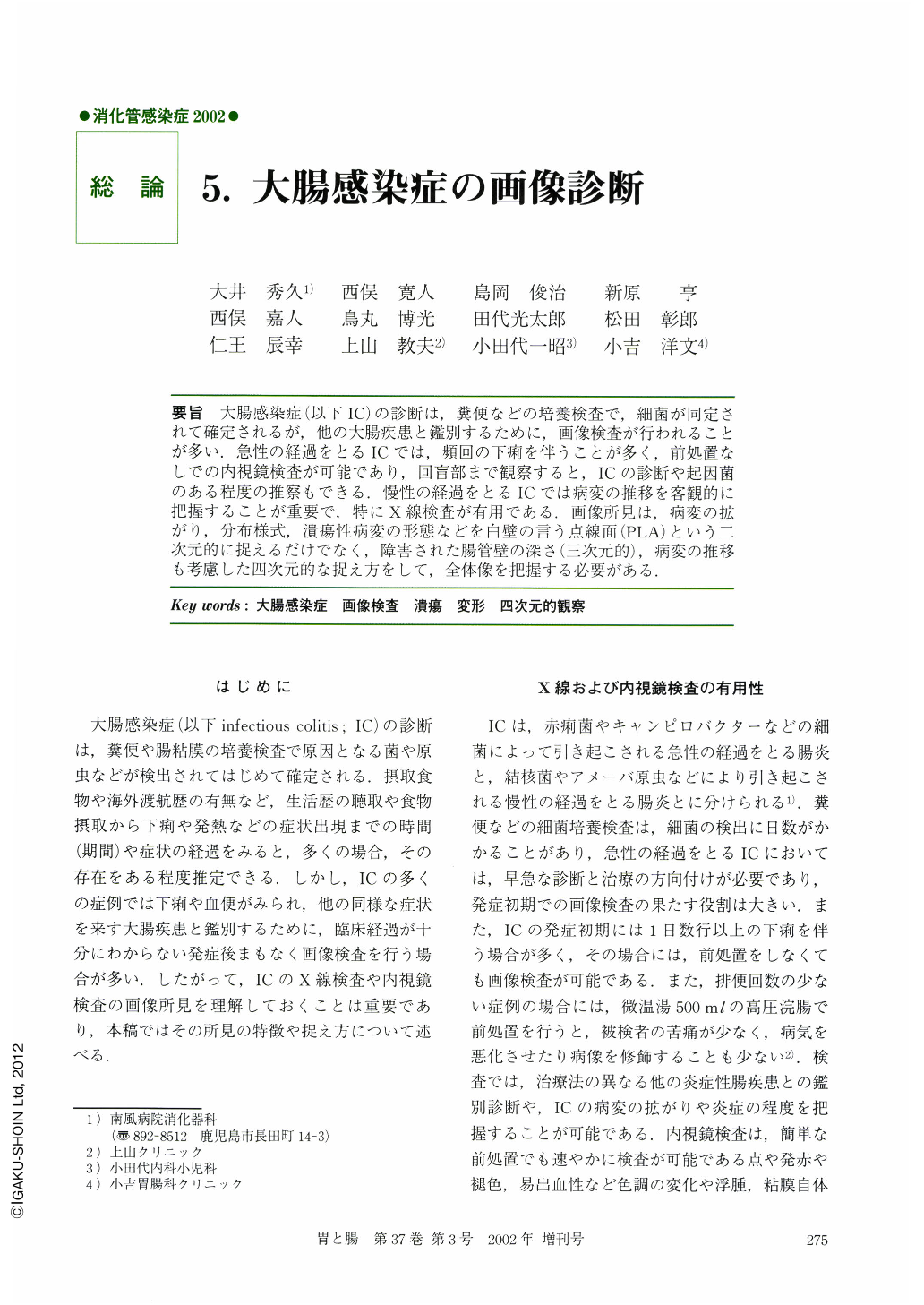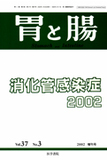Japanese
English
- 有料閲覧
- Abstract 文献概要
- 1ページ目 Look Inside
- サイト内被引用 Cited by
要旨 大腸感染症(以下IC)の診断は,糞便などの培養検査で,細菌が同定されて確定されるが,他の大腸疾患と鑑別するために,画像検査が行われることが多い.急性の経過をとるICでは,頻回の下痢を伴うことが多く,前処置なしでの内視鏡検査が可能であり,回盲部まで観察すると,ICの診断や起因菌のある程度の推察もできる.慢性の経過をとるICでは病変の推移を客観的に把握することが重要で,特にX線検査が有用である.画像所見は,病変の拡がり,分布様式,潰瘍性病変の形態などを白壁の言う点線面(PLA)という二次元的に捉えるだけでなく,障害された腸管壁の深さ(三次元的),病変の推移も考慮した四次元的な捉え方をして,全体像を把握する必要がある.
The diagnosis of infective colitis requires the isolation of the causative organism. Colonoscopy and Barium enema study are also essential for the differential diagnosis in some cases. Since most of the patients with acute infective colitis have frequent bowel movements, colonoscopy can be carried out without preparation. Observation of the whole colon and rectum as well as the terminal ileum can help in the diagnosis of colitis and in the presumption of what organism causes it. Taking an objective view of the time course of the disease is essential for the diagnosis of chronic infective colitis. Therefore, barium enema study is especially useful. The characteristics of colonoscopic and radiologic findings of the extent of colitis, distribution, and form of the ulcers should be studied by the two dimensional analysis proposed by Dr. Shirakabe, the three dimensional analysis which includes the depth of lesions, and even the four dimensional analysis which includes the time course of the lesions.

Copyright © 2002, Igaku-Shoin Ltd. All rights reserved.


